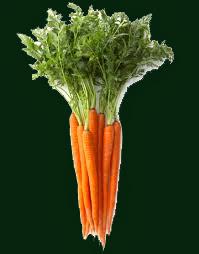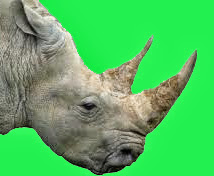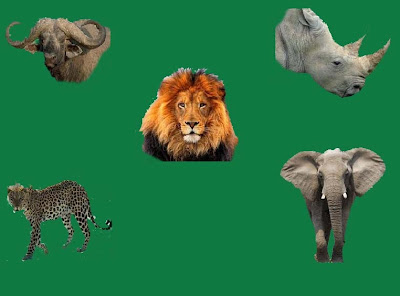An ecosystem
consists of the biological community that occurs in some locale, and the
physical and chemical factors that make up its non-living or abiotic
environment. There are many examples of ecosystems -- a pond, a forest, an
estuary, a grassland. The boundaries are not fixed in any objective way,
although sometimes they seem obvious, as with the shoreline of a small pond.
Usually the boundaries of an ecosystem are chosen for practical reasons having
to do with the goals of the particular study.
Energy,
water, nitrogen and soil minerals are other essential abiotic components of an
ecosystem. The energy that flows through ecosystems is obtained primarily from
the sun. It generally enters the system through photosynthesis, a process that
also captures carbon from the atmosphere. By feeding on plants and on one
another, animals play an important role in the movement of matter and energy
through the system. They also influence the quantity of plant and microbial
biomass present. By breaking down dead organic matter, decomposers release
carbon back to the atmosphere and facilitate nutrient cycling by converting
nutrients stored in dead biomass back to a form that can be readily used by
plants and other microbes.
Ecosystems
are controlled both by external and internal factors. External factors such as
climate, the parent material which forms the soil and topography, control the
overall structure of an ecosystem and the way things work within it, but are
not themselves influenced by the ecosystem. Other external factors include time
and potential biota. Ecosystems are dynamic entities—invariably, they are
subject to periodic disturbances and are in the process of recovering from some
past disturbance. Ecosystems in similar environments that are located in
different parts of the world can have very different characteristics simply
because they contain different species.
The introduction of non-native species can
cause substantial shifts in ecosystem function. Internal factors not only
control ecosystem processes but are also controlled by them and are often
subject to feedback loops. While the
resource inputs are generally controlled by external processes like climate and
parent material, the availability of these resources within the ecosystem is
controlled by internal factors like decomposition, root competition or
shading. Other internal factors include
disturbance, succession and the types of species present. Although humans exist
and operate within ecosystems, their cumulative effects are large enough to
influence external factors like climate.
Terrestrial ecosystem
 A
terrestrial ecosystem is an ecosystem found only on landforms. Six primary
terrestrial ecosystems exist: tundra, taiga, temperate deciduous forest,
tropical rain forest, grassland and desert. A community
of organisms and their environment that occurs on the land masses of continents
and islands. Terrestrial ecosystems are distinguished from aquatic ecosystems
by the lower availability of water and the consequent importance of water as a
limiting factor. Terrestrial ecosystems are characterized by greater
temperature fluctuations on both a diurnal and seasonal basis than occur in
aquatic ecosystems in similar climates.
A
terrestrial ecosystem is an ecosystem found only on landforms. Six primary
terrestrial ecosystems exist: tundra, taiga, temperate deciduous forest,
tropical rain forest, grassland and desert. A community
of organisms and their environment that occurs on the land masses of continents
and islands. Terrestrial ecosystems are distinguished from aquatic ecosystems
by the lower availability of water and the consequent importance of water as a
limiting factor. Terrestrial ecosystems are characterized by greater
temperature fluctuations on both a diurnal and seasonal basis than occur in
aquatic ecosystems in similar climates.
The availability of light is greater in
terrestrial ecosystems than in aquatic ecosystems because the atmosphere is
more transparent than water. Gases are more available in terrestrial ecosystems
than in aquatic ecosystems. Those gases include carbon dioxide that serves as a
substrate for photosynthesis, oxygen that serves as a substrate in aerobic
respiration, and nitrogen that serves as a substrate for nitrogen fixation.
Terrestrial environments are segmented into a subterranean portion from which
most water and ions are obtained, and an atmospheric portion from which gases
are obtained and where the physical energy of light is transformed into the
organic energy of carbon-carbon bonds through the process of photosynthesis.
Terrestrial
ecosystems occupy 55,660,000 mi2 (144,150,000 km2), or 28.2%, of Earth's surface.
Although they are comparatively recent in the history of life (the first
terrestrial organisms appeared in the Silurian Period, about 425 million years
ago) and occupy a much smaller portion of Earth's surface than marine
ecosystems, terrestrial ecosystems have been a major site of adaptive radiation
of both plants and animals. Major plant taxa in terrestrial ecosystems are
members of the division Magnoliophyta (flowering plants), of which there are
about 275,000 species, and the division Pinophyta (conifers), of which there
are about 500 species. Members of the division Bryophyta (mosses and
liverworts), of which there are about 24,000 species, are also important in
some terrestrial ecosystems. Major animal taxa in terrestrial ecosystems
include the classes Insecta (insects) with about 900,000 species, Aves (birds)
with 8500 species, and Mammalia (mammals) with approximately 4100 species.
Aquatic ecosystem
 An aquatic
ecosystem is an ecosystem in a body of water. Communities of organisms that are
dependent on each other and on their environment live in aquatic ecosystems.
The two main types of aquatic ecosystems are marine ecosystems and freshwater
ecosystems.
An aquatic
ecosystem is an ecosystem in a body of water. Communities of organisms that are
dependent on each other and on their environment live in aquatic ecosystems.
The two main types of aquatic ecosystems are marine ecosystems and freshwater
ecosystems.
Marine
ecosystems cover approximately 71% of the Earth's surface and contain
approximately 97% of the planet's water. They generate 32% of the world's net
primary production. They are
distinguished from freshwater ecosystems by the presence of dissolved
compounds, especially salts, in the water. Approximately 85% of the dissolved
materials in seawater are sodium and chlorine. Seawater has an average salinity
of 35 parts per thousand (ppt) of water. Actual salinity varies among different
marine ecosystems.
A classification of marine habitats.
Marine
ecosystems can be divided into many zones depending upon water depth and
shoreline features. The oceanic zone is the vast open part of the ocean where
animals such as whales, sharks, and tuna live. The benthic zone consists of
substrates below water where many invertebrates live. The intertidal zone is the
area between high and low tides; in this figure it is termed the littoral zone.
Other near-shore (neritic) zones can include estuaries, salt marshes, coral
reefs, lagoons and mangrove swamps. In the deep water, hydrothermal vents may
occur where chemosynthetic sulfur bacteria form the base of the food web.

.jpg)


t.jpg)

.jpg)


























.jpg)



